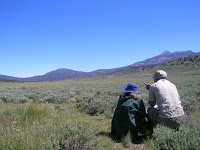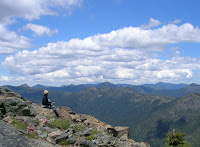A guest post by We need to change how our species makes and creates. But simply exchanging “green” materials for “conventional” ones won’t cut it. What’s required is a revolutionary re-wiring of how we design and build our habitat, derive our energy, and make our things. The mainstream of design needs a new worldview, and quick! Luckily, the instructions for this “new” design philosophy are intrinsic in our own biology and the ecosystems we live within. The field of biomimicry is rolling out nature’s blueprints, and the concept of biophilia is helping us to see that this is good news for our stressed out, isolated, and medicated modern selves. Indeed ecological designers and permaculturalists are re-envisioning a world in which humans regenerate their own landscapes, creating thriving ecosystems whose biodiversity feeds our souls just as it does our bellies.
photo by Malena Marvin
But we can take ecological design even deeper if we acknowledge that how we learn so often trumps what we learn. Sitting in front of the glowing tsunami of electronic information can introduce our brains to important abstract concepts, but it will not address the fact that in order to design like we are part of nature, we need to authentically experience ourselves as natural. Ecological literacy may be taught in the classroom, but ecological fluency must be earned outdoors, through observation and physical inquiry.
Our counter-evolutionary cultural insistence on living physically and emotionally separate from our support (eco)systems has created a dangerous negative feedback loop. We interrupt this loop whenever we spend real time experiencing what is wild and nonhuman. It’s our imperative as designers to consciously translate that experience back into our habitat, so that we can create space that awakens because it is alive.
 |
| photo by Malena Marvin |
The Nature of Design reconnects designers with their animal natures, taking the pedagogy of design beyond its rectangular classrooms, and out into the living, breathing, photosynthesizing world. We track projects and ideas in deep ecological design at natureofdesign.org and our courses research how back country immersion and experiential study of ecology influence creativity and the design/build process. A recent peer-reviewed study bolsters our approach, finding that "…four days of immersion in nature, and the corresponding disconnection from multi-media and technology, increases performance on a creative, problem-solving task by a full 50%.” The Nature of Design is bringing this line of inquiry to the field of design and architecture.
If you like these ideas, or know someone who would, consider taking a field- and nature- based Nature of Design course through Yestermorrow this year. Students will explore biomimicry, biophilia, and other concepts in ecology and ecological design on a multi-day backpacking trip before diving into a culminating design project in the studio. Through hands on activities, readings, and discussion, students will ask: How does immersion in a natural environment impact creativity and design decisions? Can an experiential understanding of natural processes lead to more "natural" design? What would it look and feel like to truly align contemporary building with the principles of ecology?
